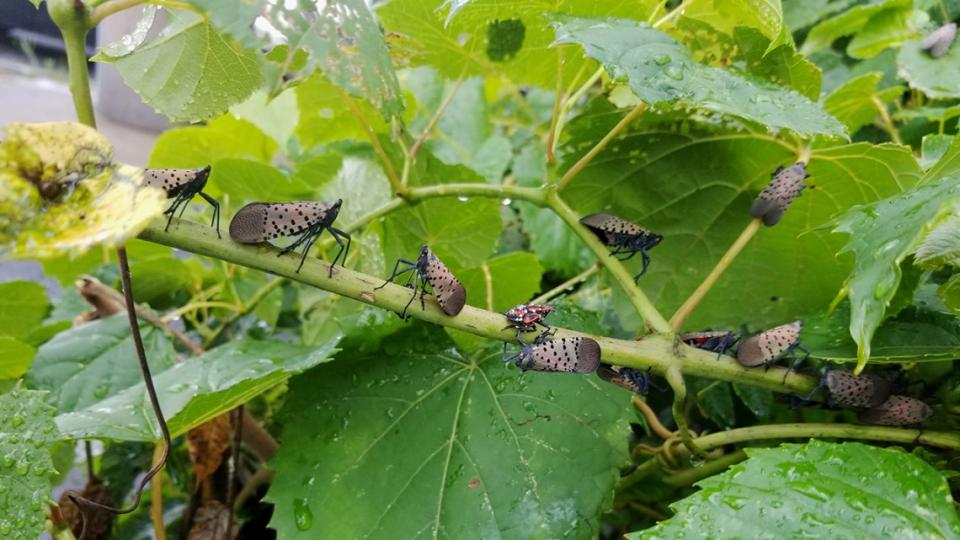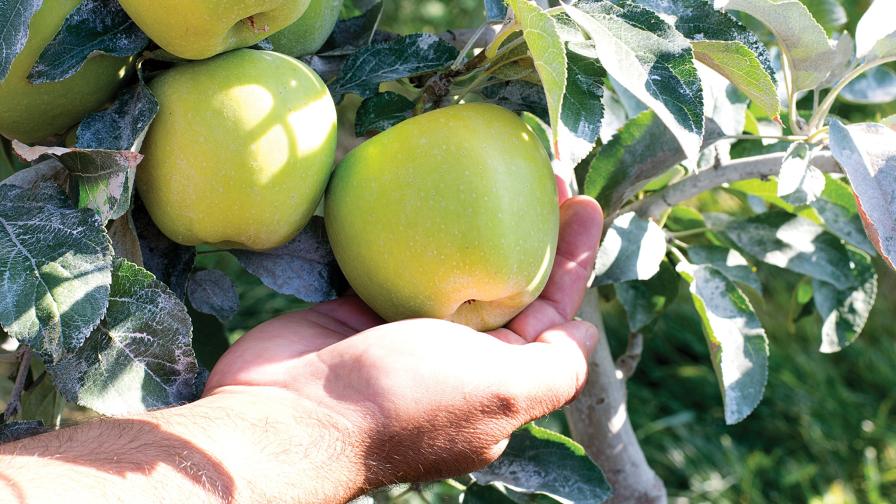New Find Could Help to Stop Spotted Lanternfly

Spotted lanternfly adults and fourth-instar nymph with bright red coloring (center), feed on a grapevine. (Photo: Eric Clifton/Cornell University
Research at Cornell University led to the discovery of two native fungal pathogens that have been lethal to populations of spotted lanternfly, Lycorma delicatula, near Reading, PA. Spotted lanternfly feeds on more than 70 plant species, including grapevines and apple trees.
Led by Eric Clifton, a Postdoctoral Researcher in the lab of Cornell Professor of entomology and co-author Ann Hajek, their research has been published in “A pair of native fungal pathogens drives decline of a new invasive herbivore.”
Clifton and Hajek detail how two unrelated fungi Batkoa major and Beauveria bassiana, have been killing spotted lanternfly populations since 2017.
“It was clear anywhere you walked, you’d see dozens of lanternflies killed by Beauveria on the ground, and then you’d see cadavers all over the trees killed by Batkoa,” Clifton told the Cornell Chronicle. “At the same time, they have just one ant, one stonefly, and a beetle killed by Beauveria and no other insects killed by Batkoa in the area.
On further examination in the lab, researchers found 97% of lanternflies on tree trunks were killed by B. major, and 51% of cadavers on the ground were killed by B. bassiana and the rest by B. major. B. major is a relatively unknown fungus. But Hajek intends to study the fungus more in the future. B. bassiana is a soil fungus.
Clifton and Hajek suspect the reason the two fungi infect spotted lanternfly, but not other local species is the lanternfly is a relatively new species to the area and the immunity of local pests has evolved over time.










